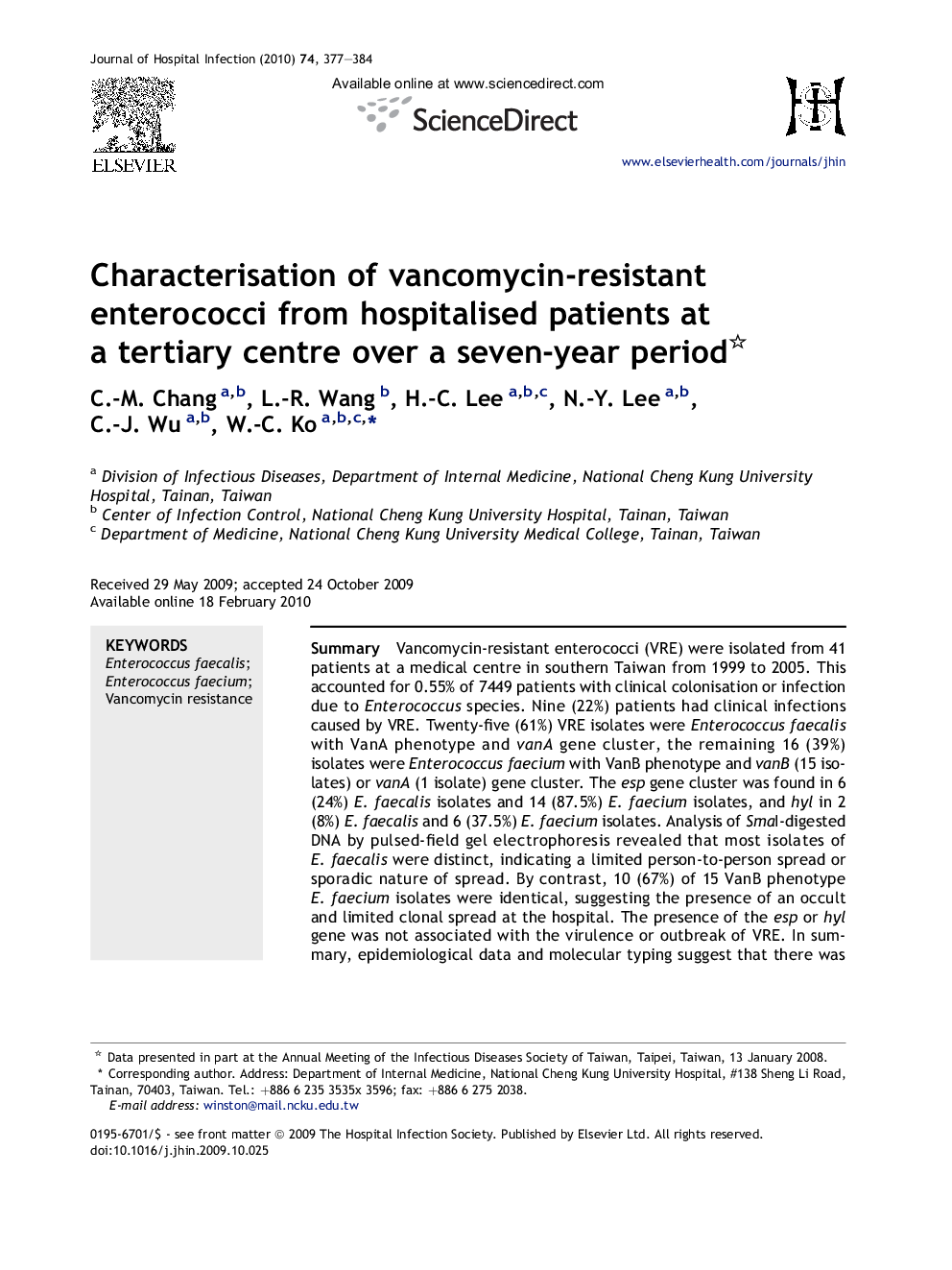| Article ID | Journal | Published Year | Pages | File Type |
|---|---|---|---|---|
| 3372859 | Journal of Hospital Infection | 2010 | 8 Pages |
SummaryVancomycin-resistant enterococci (VRE) were isolated from 41 patients at a medical centre in southern Taiwan from 1999 to 2005. This accounted for 0.55% of 7449 patients with clinical colonisation or infection due to Enterococcus species. Nine (22%) patients had clinical infections caused by VRE. Twenty-five (61%) VRE isolates were Enterococcus faecalis with VanA phenotype and vanA gene cluster, the remaining 16 (39%) isolates were Enterococcus faecium with VanB phenotype and vanB (15 isolates) or vanA (1 isolate) gene cluster. The esp gene cluster was found in 6 (24%) E. faecalis isolates and 14 (87.5%) E. faecium isolates, and hyl in 2 (8%) E. faecalis and 6 (37.5%) E. faecium isolates. Analysis of SmaI-digested DNA by pulsed-field gel electrophoresis revealed that most isolates of E. faecalis were distinct, indicating a limited person-to-person spread or sporadic nature of spread. By contrast, 10 (67%) of 15 VanB phenotype E. faecium isolates were identical, suggesting the presence of an occult and limited clonal spread at the hospital. The presence of the esp or hyl gene was not associated with the virulence or outbreak of VRE. In summary, epidemiological data and molecular typing suggest that there was occult clonal spread of VanB phenotype–vanB genotype E. faecium in the surgical ICU, and the limited person-to-person spread or sporadic nature of E. faecalis. Infection control measures are warranted due to the potential for spread of VRE.
